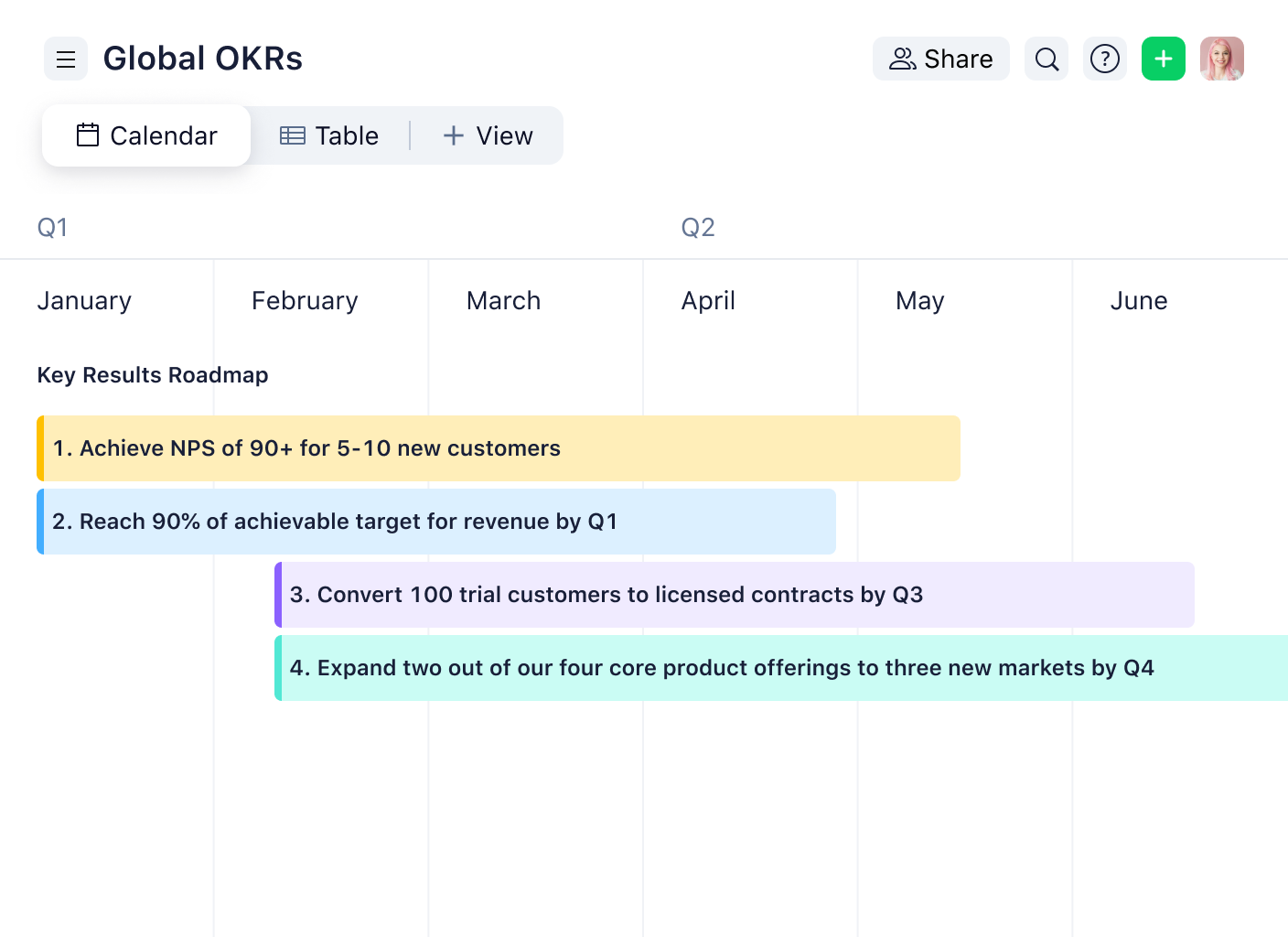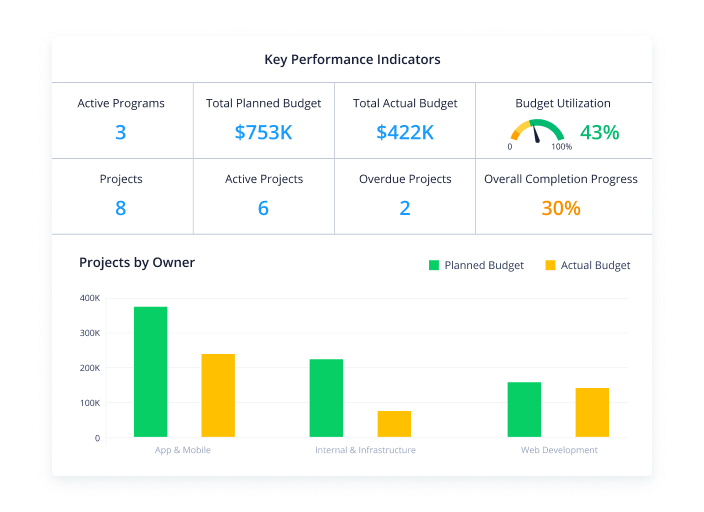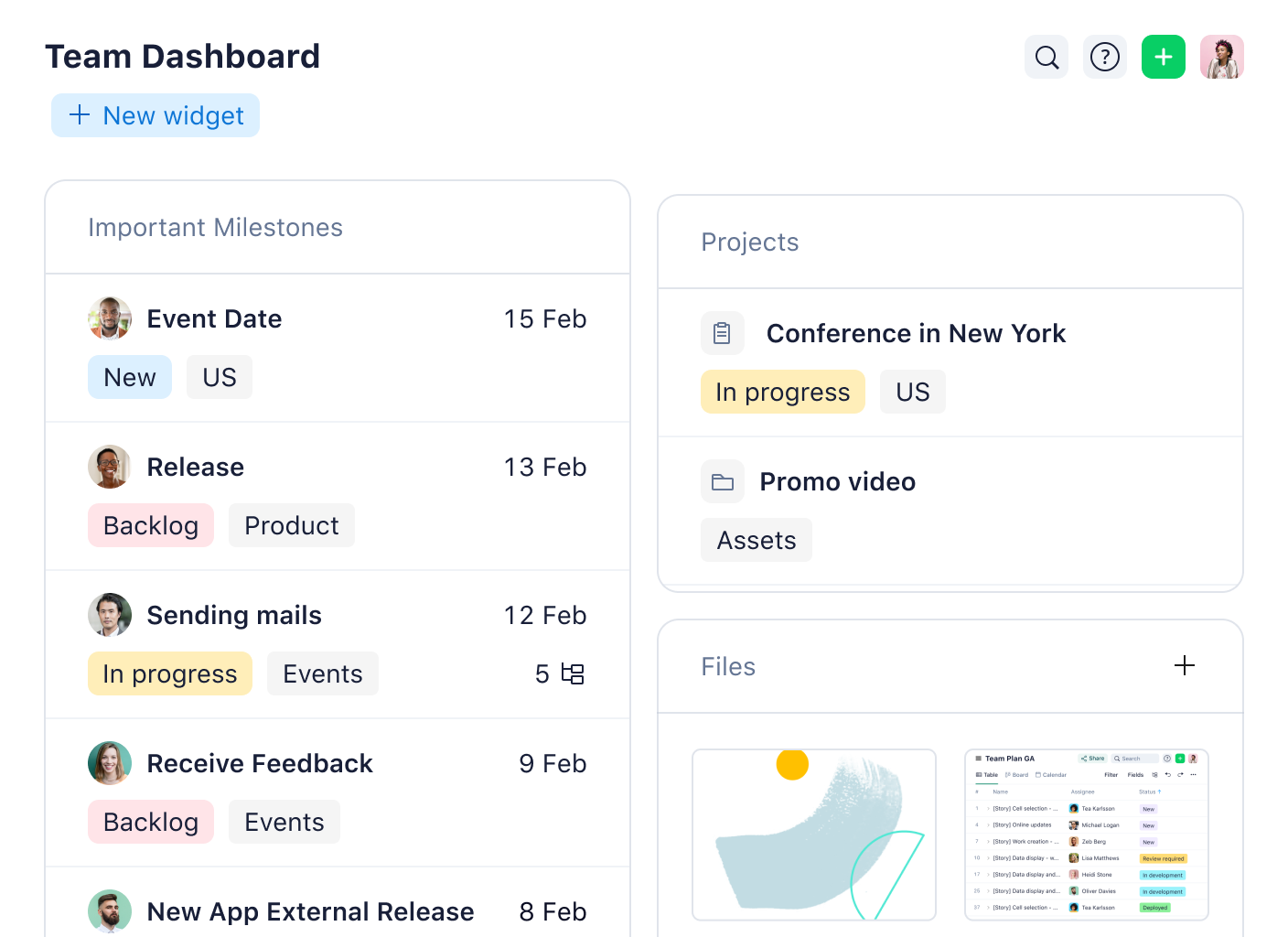What Is Goal Setting in Business?
This article was created with the assistance of an AI engine. It has been reviewed and revised by our team of experts to ensure accuracy and quality.
Introduction to Setting Goals
We won’t mince words: Setting and achieving goals is a crucial component of business success. Goals help companies stay on track, measure progress, and maintain a competitive edge in the marketplace.
In this article, we explore the definition and importance of goal setting, specifically focusing on goals in a business context. We also explain in depth how to set business goals effectively to increase your likelihood of success and drive your company forward.
Before we begin, we’d like to remind you that if you’re looking for powerful goal setting software, you can unlock a free trial with Wrike today.
Goal setting definition
Goal setting is the process of defining what an individual, couple, or group aims to achieve. The primary purpose of goal setting is to provide a roadmap for growth and improvement. Goals can relate to any area of life in which progress is desired: fitness, finances, relationships, even housekeeping.
What is goal setting in a business context?
In business, goals should be aligned with a company’s vision, mission, and overall strategy. All goals should be clear, realistic, and achievable, showing a clear path from the starting point to the end point. Business goals can take various forms. You can set goals for the company as a whole, with smaller ones for departments, teams, and even individual employees.
Why is goal setting important?
Goal setting is essential for businesses for several reasons.
Direction and focus: Setting clear goals provides a sense of direction and focus for the organization, meaning employees know which tasks to prioritize and where their resources are most needed.
Motivation: Goals can serve as a powerful motivational tool for employees. Think about it — when you have a personal goal at work, you’re more inclined to work harder and hit your targets.
Performance measurement: Goals help businesses track progress and measure performance against their key benchmarks. That way, they can keep an eye on things and ensure they are on the right path for growth.
Decision making: By setting goals, businesses can make better-informed decisions about resource allocation, budgeting, and strategic planning.
Accountability: Goal setting promotes accountability, both at the individual and organizational level, by establishing clear expectations for performance.
How to set business goals
Following these key steps can help you set and achieve both short-term and long-term goals.
Align business goals with the company vision and mission
Before you set your business goals, ask yourself this: Do they align with your company’s vision and mission? These two guiding principles should be the foundation for your goals and will help maintain consistency across the organization. By aligning company goals with the vision and mission, you can ensure that everyone is working toward the same end.


Develop SMART goals
You’re likely familiar with the SMART criteria: specific, measurable, achievable, relevant, and time-bound. By ensuring your goals meet these criteria, you increase the likelihood of actually achieving them.
Choose the right metrics
To measure the success of your goals, you need to select the right metrics or key performance indicators (KPIs). KPIs should be directly related to your goals and provide actionable insights to help you make decisions. For example, let’s say your goal is to increase customer acquisition. In this case, you might use metrics such as number of new customers, conversion rates, and customer acquisition cost.


Break goals into smaller tasks
Overly complex goals can be daunting and difficult to achieve. Breaking them down into smaller, more manageable tasks can make the process a lot more digestible and easy to tackle. What’s more, a series of smaller tasks will help you track progress more incrementally and maintain momentum toward the larger objective.
Set deadlines and milestones
The dreaded word for any writer: deadline! However, setting deadlines and milestones is essential to maintain a sense of urgency and ensure consistent progress. Deadlines help keep employees accountable and focused on the tasks at hand. Milestones, on the other hand, are useful checkpoints to celebrate progress and keep motivation high.


Monitor and review progress
How do you ensure your business goals remain on track? By regularly monitoring and reviewing progress. Assess performance against your KPIs so you can identify areas that require improvement or adjustment — and address them quickly.
Foster a goal-oriented culture
Engage your employees by creating a goal-oriented culture within your organization. Encourage open communication, collaboration, and a growth mindset among employees so they feel part of the team and can share in the success. Remember to recognize and celebrate progress (no matter how small), and provide support and resources for employees to develop the skills they’re passionate about.
Set goals and succeed with Wrike
Types of goals
Organizations can set several types of business goals, depending on their priorities and strategies. We describe four common types below.
Financial goals
As you might expect, financial goals focus on the company’s monetary performance, such as revenue, profitability, and cash flow. Examples include increasing revenue by a certain percentage, reducing operating costs, and improving profit margins.
Example: A software company wants to increase its annual recurring revenue by 25% within the next fiscal year. To achieve this, the company might launch a new product, expand its marketing efforts, or offer promotional incentives to attract new customers and retain existing ones.
Business case: In 2010, Domino’s Pizza set a goal to increase its share price, which had plummeted to an all-time low of around $9. The company focused on improving its product, rebranding, and investing in technology. By 2018, Domino’s stock had risen over 2,000%, showcasing the power of setting and pursuing clear financial goals.
Operational goals
Operational goals relate to a company’s internal processes. Examples may include reducing production time, improving product quality, and streamlining supply chain management.
Example: A manufacturing company aims to reduce production downtime by 15% within six months. To achieve this, decision makers may invest in preventive maintenance, employee training, and updated equipment.
Business case: Toyota, one of the world’s leading automakers, has long been known for its focus on operational efficiency. The company implemented the Toyota Production System, which emphasizes continuous improvement, waste elimination, and just-in-time production — not a bad model to emulate.
Strategic goals
These are the goals your manager is always talking about. Strategic goals are long-term objectives that guide the company’s overall direction and growth. Examples include expanding into new markets, launching new products, and acquiring competitors.
Example: A consumer electronics company wants to become a market leader in the smart home industry within five years. This goal may involve developing innovative products that address pain points, establishing partnerships with other tech companies, and investing in marketing and brand awareness.
Business case: In 2001, Apple Inc. set a strategic goal to revolutionize the music industry with the launch of the iPod and iTunes. This move allowed Apple to transition from being solely a computer manufacturer to a dominant player in the consumer electronics market. It’s this kind of strategic thinking that enables Apple to remain an industry leader and innovator.
Employee engagement goals
Finally, don’t forget to focus on the individual. Employee engagement goals focus on enhancing the workplace experience, boosting morale, and retaining top talent. Examples include increasing employee satisfaction scores, reducing turnover rates, and implementing professional development programs.
Example: A retail company aims to improve employee retention by 20% within two years. To achieve this, they may conduct regular employee surveys, provide competitive compensation and benefits packages, and create opportunities for career growth.
Business case: Google is lauded for its focus on employee engagement and satisfaction. The company offers an array of perks, such as free meals, generous parental leave, and on-site wellness programs. As a result, Google consistently ranks among the top companies for employee satisfaction and attracts top talent from around the world.
Set goals efficiently and succeed with Wrike
So, by now it should be clear that setting achievable goals at all levels is a no-brainer for organizational success. By understanding the importance of goal setting and following the steps outlined in this article, you can create a solid strategic roadmap for your company.
Remember to:
- Align your goals with your company’s vision and mission
- Develop SMART goals
- Choose the right metrics
- Break goals into smaller tasks
- Set deadlines and milestones
- Monitor progress regularly
- Foster a goal-oriented culture
Start with the above and you’ll be an expert at goal setting in no time.
With Wrike, you can easily set overarching goals at the company level and break down these into individual goals. With pre-built templates, interactive Gantt charts, and a defined folder structure, goal setting is easy with Wrike.

